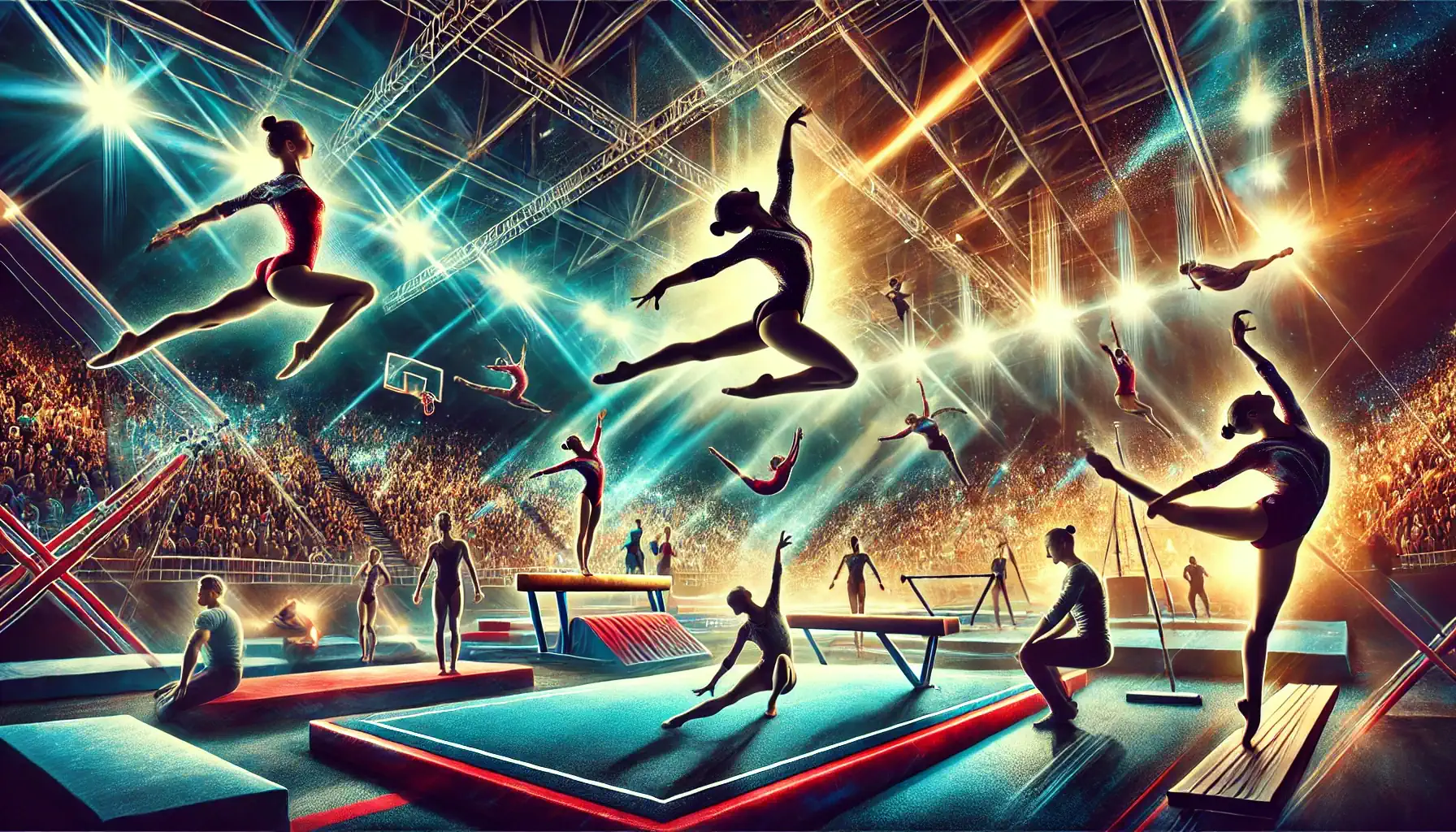Think you know pressure? Try standing before thousands, knowing your next 90 seconds could make or break years of training. Welcome to the high-stakes arena of competitive gymnastics, where athletes push the boundaries of what’s humanly possible.
The Roots of Gymnastics
Gymnastics has a rich history dating back to ancient civilizations. Its origins trace to Ancient Greece, where physical fitness was highly valued. The word “gymnastics” itself comes from the Greek word “gymnos,” meaning naked – a nod to the fact that athletes often trained unclothed.
Ancient Greeks used gymnastics as a way to prepare young men for war. They focused on activities like running, jumping, and wrestling. These exercises laid the groundwork for what would become modern gymnastics.
The sport evolved over centuries. In the late 18th and early 19th centuries, two physical educators – Johann Friedrich GutsMuths and Friedrich Ludwig Jahn – developed gymnastics further. They introduced apparatus like the horizontal bar and parallel bars.
Modern competitive gymnastics took shape in the late 19th and early 20th centuries. The sport made its Olympic debut in 1896 for men, and in 1928 for women. Since then, it has become one of the most popular Olympic events.
Disciplines in Gymnastics
Gymnastics encompasses several disciplines, each with its own unique challenges and appeal. Here’s a breakdown of the main types:
- Artistic Gymnastics: This is the most well-known form. It involves performances on various apparatus.
- Rhythmic Gymnastics: A discipline that combines elements of ballet, gymnastics, dance, and apparatus manipulation.
- Trampoline Gymnastics: Focuses on acrobatic skills performed on a trampoline.
- Acrobatic Gymnastics: Involves partnerships of gymnasts working together to perform acrobatic moves.
- Aerobic Gymnastics: A dynamic discipline that performs routines to music, showcasing strength, flexibility, and aerobic endurance.
Let’s delve deeper into Artistic Gymnastics, the most popular discipline.
Artistic Gymnastics: A Closer Look
Artistic Gymnastics is divided into men’s and women’s competitions, each with its own set of apparatus. Here’s a quick overview:
| Men’s Events | Women’s Events |
|---|---|
| Floor Exercise | Floor Exercise |
| Pommel Horse | Balance Beam |
| Still Rings | Uneven Bars |
| Vault | Vault |
| Parallel Bars | |
| Horizontal Bar |
Each apparatus tests different skills. The floor exercise showcases tumbling and dance elements. The balance beam demands precise footwork and balance. The uneven bars and horizontal bar require swings, releases, and catches. The vault involves a powerful run-up and a complex aerial manoeuvre.
Judging in gymnastics is complex. Scores are based on difficulty and execution. Gymnasts strive to perform increasingly difficult skills while maintaining perfect form and technique.
Training and Physical Demands
Gymnastics is one of the most physically demanding sports. It requires a unique combination of strength, flexibility, speed, balance, coordination, and discipline. Gymnasts often start training at a young age, dedicating countless hours to perfecting their skills.
A typical training regimen includes:
- Strength training to build muscular power and endurance
- Flexibility exercises to improve range of motion
- Skill practice on each apparatus
- Mental preparation and visualisation techniques
- Conditioning to maintain overall fitness
The intensity of training varies depending on the gymnast’s level. Elite gymnasts may train up to 30 hours per week. This dedication is necessary to master the complex skills required at high-level competitions.
Safety is a crucial aspect of gymnastics training. Proper technique, adequate warm-up, and use of safety equipment like mats and spotters help prevent injuries. Despite these precautions, gymnastics remains a high-risk sport due to the nature of the skills performed.
Gymnastics in Popular Culture
Gymnastics has made its mark beyond the competition floor. The sport has featured in numerous films, TV shows, and books. It’s often portrayed as a test of character, showcasing themes of perseverance, dedication, and overcoming adversity.
The grace and athleticism of gymnastics have also influenced other areas. Elements of gymnastic movements can be seen in dance, circus arts, and even martial arts. The discipline required in gymnastics training is often held up as an example of the dedication needed to excel in any field.
Major competitions like the Olympics and World Championships draw millions of viewers. These events often inspire a surge in gymnastics participation, as young viewers are captivated by the impressive feats they see on screen.
So, gymnastics continues to evolve, with new skills being developed and rules being refined. The sport pushes the boundaries of human physical capability, always striving for that perfect combination of difficulty and execution. As we look to the future, gymnastics will undoubtedly continue to inspire and amaze, showcasing the remarkable potential of the human body and spirit.


Leave a Reply